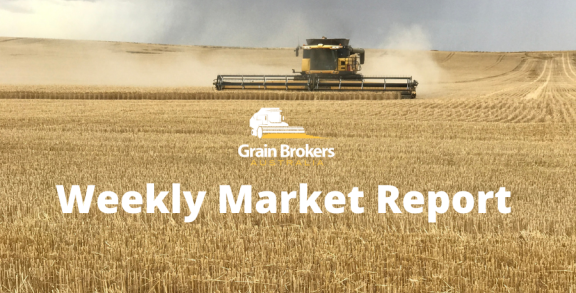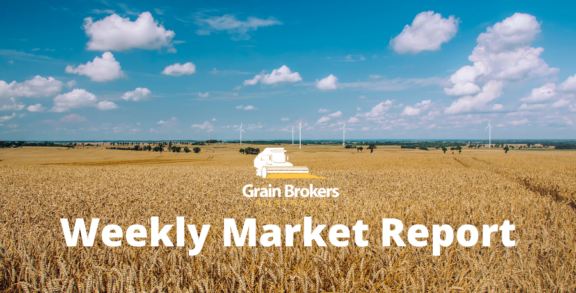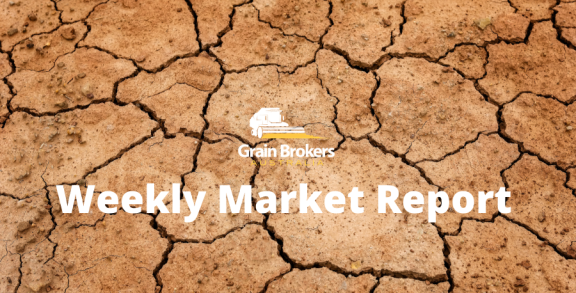
Sorghum harvest commences, but production threatened …
As the last of the Australian winter crop harvest winds down in Victoria, South Australia and Western Australia, the early sorghum harvest has rolled into action across southern Queensland and isolated pockets of northern New South Wales.
There has been much conjecture around the size of this season’s sorghum crop after seed supplies reportedly ran out back in October. The early planted area in southern Queensland was quite significant, but plenty of seed obviously sat in the shed. The pre-Christmas rains initiated a flurry of planting activity across the holiday period with planters even seen operating on Christmas day.
Fortunes have been mixed throughout the growing season. Most of the early sown crops in northern New South Wales have struggled through without much in crop rainfall, and some have perished as a result. While there are some good areas, many early yield reports have not been flattering. At this stage, with much of the Liverpool Plains and other areas further north yet to be sown (and unlikely to be sown), the New South Wales crop will struggle to exceed 500,000 metric tonnes (MT). This is well below average.
Southern Queensland crops have generally fared better. Whilst the spring rainfall has been lower than average in most districts the crop has managed quite well. Apart from the irrigated crops, those sown into long fallow ground certainly look the best. Nevertheless, there were isolated instances where paddocks failed and were sprayed out. Some of these were resown when later rains arrived.
Overall the inner Darling Downs crops (east of Dalby and Cecil Plains) are in good condition. The same can be said for the areas north of Dalby and west as far as Condamine and Miles. In general, those crops that are at, or close, to harvest will be above average in yield. Evapotranspiration is at its peak at this time of the year so those paddocks that are still in the grain fill stage will require more rain to finish and maintain above average yield potential.
The size of the late sown crop may surprise to the upside if the growing season is a little sympathetic. This has the potential to compensate, in a small way, for the lower production in northern New South Wales as the drought continues in many areas of the state. The lack of seed availability has forced some growers to reduce seeding rates in order to plant the intended area. At this stage, the southern Queensland crop could still be as high as 1.2 million metric tonnes, but regular rain is required to get that through to harvest and in the bin.
The planting window is now well and truly open in Central Queensland, but the required rains have not arrived in many districts. Around one-third of the predetermined area has been planted and much of that is into a marginal moisture profile. The ideal sowing window for the region runs through to at least mid-February, so there is still time. However, substantial soaking rains are required across the entire region to boost the sown area and get the balance of the crop in the ground.
In a big year, Central Queensland can produce more than 500,000MT of sorghum, but most estimates would currently be south of 350,000MT. Unfortunately, the hot, dry weather is forecast to continue through to the end of January so the final production number could easily be much less. Due to its distance from key domestic markets, a significant proportion of Australia’s sorghum exports are traditionally loaded out of the Central Queensland ports of Gladstone and Mackay.
The market reacted to the availability of new crop sorghum with the delivered Darling Downs market trading down to $350 at the end of last week, a fall of around $10 over the week. The delivered Brisbane and delivered Newcastle markets were also weaker last week, falling about $8 to finish at $364 and $375 respectively.
The domestic market may have been down, but the appreciation in the Aussie dollar meant that export values actually increased week on week. China has reportedly reduced their bids for Australian sorghum, and they now sit at a substantial discount to domestic values.
This could be a reflection of reports that China has been increasing their interest in United States (US) sorghum. There are even rumours circulating that some business may have been done. With the United States Department of Agriculture (USDA) on a Trump enforced siesta, anything could have happened, and the market would be none the wiser.
US sorghum is trading at around US$185 free on board (FOB) out of the Gulf of Mexico against Brisbane FOB at around US$295. At that spread, it will be challenging for Australia to find substantial export demand. However, with queries on production in northern New South Wales and Central Queensland, the exportable surplus may not be significant.
In overseas news, Egypt (GASC) issued a wheat tender last week, and they ended up booking 415,000MT. Despite all the talk of dwindling supplies, logistics issues, rising domestic prices and phytosanitary restrictions, Russia was again the seller. A total of 295,000MT traded in the February 20-28 slot and a further 120,000 traded in the March 1-10 slot.
Values were around US$2 higher than the December tender. This dashed hopes of an early pick-up in European and US exports in the second half of the season, and the market was sold down accordingly after the tender results were released.
Last week’s US-China trade talks concluded with no official deal, but China promised to buy “a substantial amount” of agricultural, energy and manufactured goods and services from the US. There does not appear to have been any follow through with no evidence or reports of sales to close the week. The government shutdown is certainly not helping the transparency situation. Higher level talks are now scheduled for later in the month to hopefully hammer out a deal.
It seems that Don’s Party is quickly becoming a game of Deal or No Deal.
Peter McMeekin is a consultant to Grain Brokers Australia. Call 1300 946 544 to discuss your grain marketing needs.





